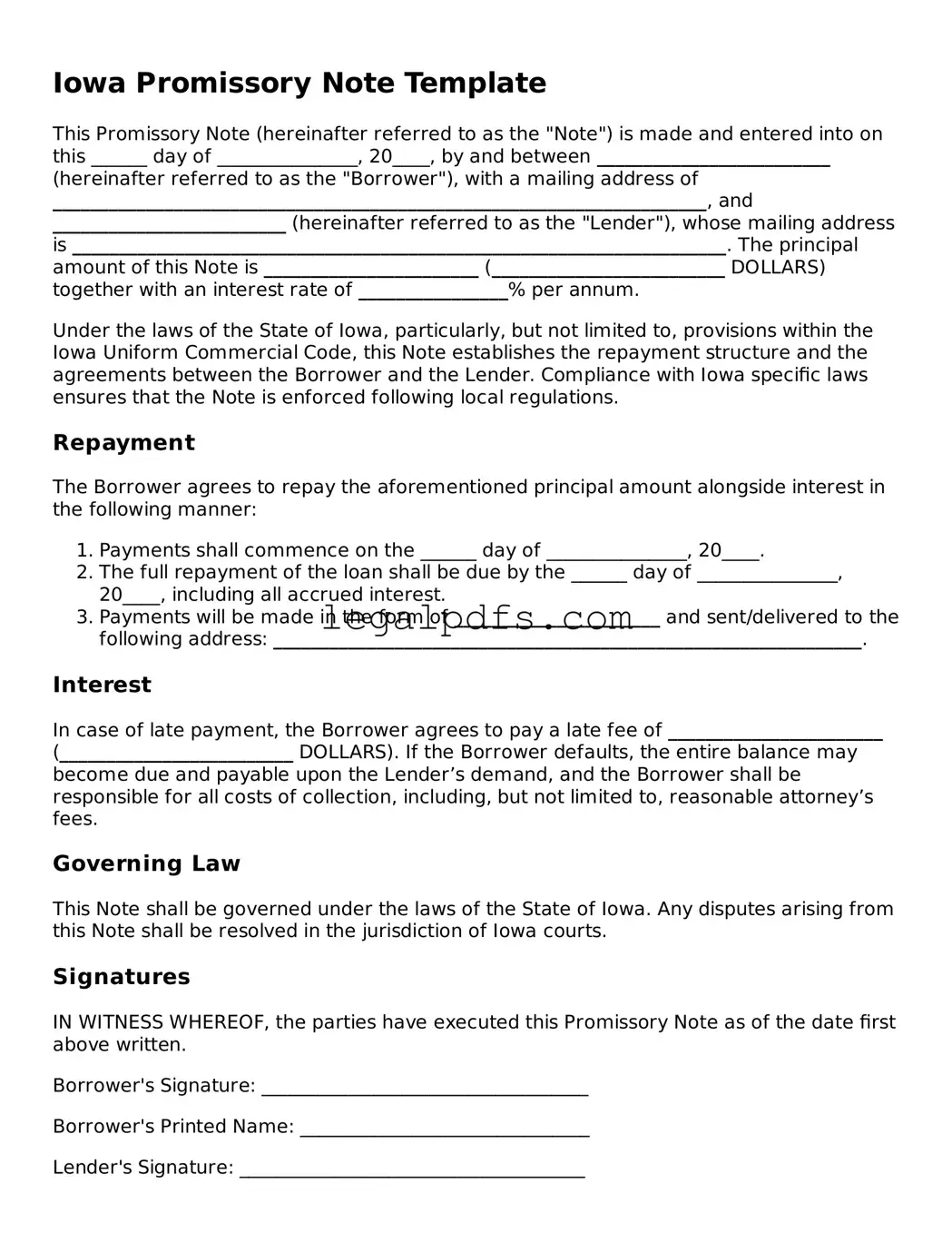Iowa Promissory Note Template
This Promissory Note (hereinafter referred to as the "Note") is made and entered into on this ______ day of _______________, 20____, by and between _________________________ (hereinafter referred to as the "Borrower"), with a mailing address of ______________________________________________________________________, and _________________________ (hereinafter referred to as the "Lender"), whose mailing address is ______________________________________________________________________. The principal amount of this Note is _______________________ (_________________________ DOLLARS) together with an interest rate of ________________% per annum.
Under the laws of the State of Iowa, particularly, but not limited to, provisions within the Iowa Uniform Commercial Code, this Note establishes the repayment structure and the agreements between the Borrower and the Lender. Compliance with Iowa specific laws ensures that the Note is enforced following local regulations.
Repayment
The Borrower agrees to repay the aforementioned principal amount alongside interest in the following manner:
- Payments shall commence on the ______ day of _______________, 20____.
- The full repayment of the loan shall be due by the ______ day of _______________, 20____, including all accrued interest.
- Payments will be made in the form of ______________________ and sent/delivered to the following address: _______________________________________________________________.
Interest
In case of late payment, the Borrower agrees to pay a late fee of _______________________ (_________________________ DOLLARS). If the Borrower defaults, the entire balance may become due and payable upon the Lender’s demand, and the Borrower shall be responsible for all costs of collection, including, but not limited to, reasonable attorney’s fees.
Governing Law
This Note shall be governed under the laws of the State of Iowa. Any disputes arising from this Note shall be resolved in the jurisdiction of Iowa courts.
Signatures
IN WITNESS WHEREOF, the parties have executed this Promissory Note as of the date first above written.
Borrower's Signature: ___________________________________
Borrower's Printed Name: _______________________________
Lender's Signature: _____________________________________
Lender's Printed Name: _________________________________
